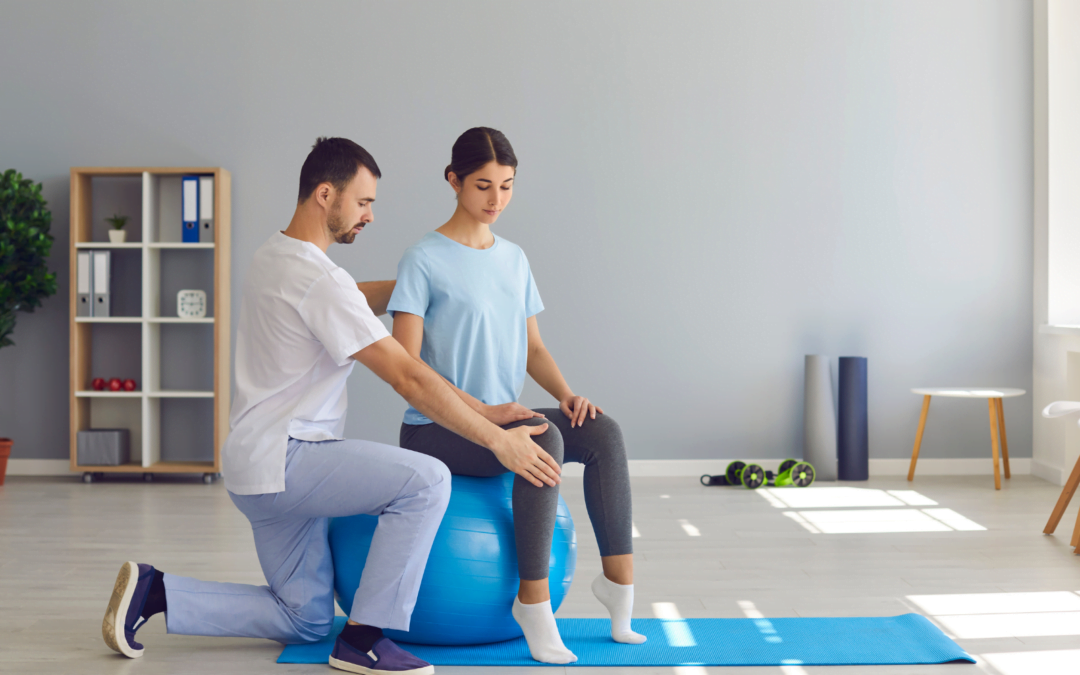One of the most frequent causes of lower back pain is, interestingly enough, due to common bad posture habits. When individuals sit for long periods of time, often hunched over (for example, to view a computer screen), they unconsciously tighten their hip muscles and simultaneously relax or “turn off” their gluteus and abdominal muscles.
This is due to the principle of reciprocal inhibition, in which one muscle in a related pair of “push-pull” muscle groups shortens and tightens, the other extends and relaxes. Think about your arms for a moment: when you flex your biceps muscles, your triceps muscles relax, and vice-versa. This is a simple illustration of the principle.
Human bodies were designed to function best when standing and walking, so unfortunately when people sit for extended periods of time (for example, almost a full work day for those with “desk jobs”), and over a period of years, their hip flexor muscles and lower back muscles can become permanently tightened, while their gluteus and abdominal muscles become permanently weakened and lose muscle tone.
This results in a condition called Pelvic Crossed Syndrome (PCS), first identified by Czech physician Vladimir Janda. It is often also called Lower Crossed Syndrome, to distinguish it from a related, but very different, disorder called Upper Crossed Syndrome.
PCS is what is known as a “silent” disorder, in that it takes years to develop, and initially displays no symptoms. Instead, the symptoms develop slowly, and include increasing curvature of the lower spine, a forward tilt of the pelvis, and overly tight hip, hamstring, and lower back muscles. These conditions can over time manifest in a myriad of more serious conditions, including lower back and knee pain, migraines and tension headaches, respiratory problems, fibromyalgia, and more.
Fortunately, PCS can be effectively treated with proper chiropractic care. Following an examination and diagnosis of PCS, Dr Sooley will advise you on the most appropriate care, which would normally include chiropractic adjustments to free the hypomobile joint (typically sacroiliac and lumbar spinal joints) to relieve the structural imbalances that have developed. At the same time, other modalities such as hydromassage, electro- stimulation, and gentle traction techniques may be indicated to relax the overly tight muscle groups. Finally, a prescription of specific exercises to strengthen the involved muscle groups completes the typical recommendations.
The treatment may take several months simply because muscle imbalances like PCS develop over time, and require time to be restored to their proper state of balance. However, with a conscientiously applied program of chiropractic and rehabilitative care, it is certainly likely that muscle imbalances can be overcome, and restoration of full movement and normal muscle strength will be the happy result.
It is quite common for patients to report relief from their symptoms of back and leg pain very quickly, and over time notice marked improvements to their posture. This enables them to walk and exercise more easily and to thus continue to strengthen the muscle groups that have become weakened over the years. As with all chiropractic care options, the methods used to treat Pelvic Crossed Syndrome are holistic, in the sense that as your spine and posture become more normalized, so does your overall health and sense of well-being. So if you’re suffering from any of the symptoms mentioned above, give us a call. We’re here to help you!

